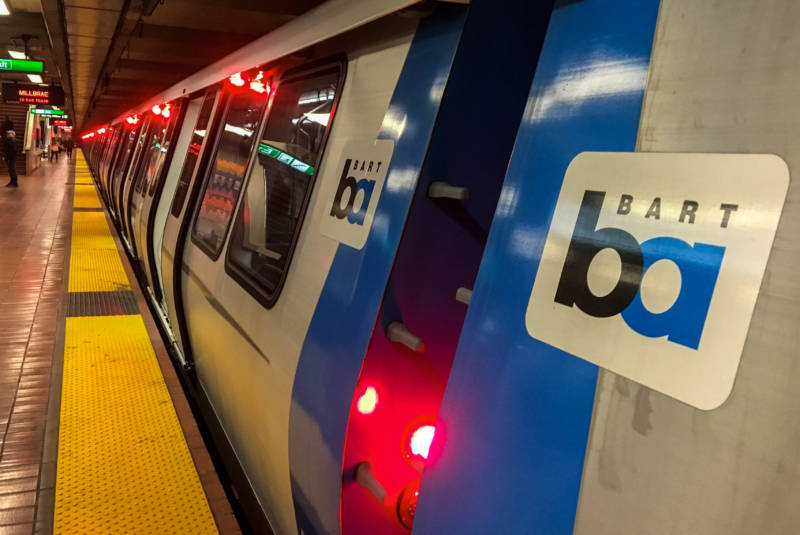But those new hybrid cab cars — called “D” cars — differ from BART’s legacy rolling stock and other new Fleet of the Future vehicles, called “E” cars, in several key respects.
The door at the car’s cab end is locked and thus prevents movement to the next car on the train unless an operator or other employee manually releases it. The D cars also lack a covered passage between cars, and to move from one D car to another involves stepping across the steel coupler that connects the vehicles.
Members of Amalgamated Transit Union Local 1555 told the board on July 25 that BART’s practice of placing the D cars in the middle of the trains poses a grave safety risk.
Michael Granat, a 29-year BART train operator, told the board in his July presentation the dangers range from the difficulty of opening the locked doors quickly in an emergency, to police officers being unable to easily move from car to car to respond to onboard incidents, to the possibility of smoke infiltrating the D cars during a fire because of their lack of a covered passage between vehicles.
Granat said the consequences could be dire.
“My fellow safety-sensitive workers and myself are here to warn you that if trains continue to run with D cars in the middle, someone will eventually die as a result,” Granat told the board. “When this happens, I think you’ll have to ask yourselves what you did to prevent it. You have the power to stop this right now.”
On Thursday, seven weeks after his first presentation, Granat appeared before the board again, presenting a picture of what he called “the dramatic gap” between D cars positioned in the middle of a train.
The quick fix the union has suggested — and that Granat reiterated Thursday — is for BART to use the D cars only on the ends of trains, at least until the agency can explore the issue and whether there are safety workarounds.
“There is a non-engineering solution, which is just to use D cars as end cars and E cars as pass-through cars until we have all that in place,” Granat told the board. “Otherwise, what I think we’re really doing is testing equipment with passengers on board. I don’t think anyone here should feel comfortable with that.”
At July’s meeting, board member Mark Foley, joined by directors Rebecca Saltzman and Debora Allen, made a formal request for a staff report on the issue. BART General Manager Robert Powers said the report will be presented sometime in November.
“We need this report back so we can figure out what’s being done, how this is being studied, how the decision were made — get more details on it,” Saltzman said in an interview after Thursday’s meeting.
Foley said after the session he asked for a management report because train operators had raised “a legitimate issue that we need to sort of nip in the bud. We’re at the beginning of the Fleet of the Future trains arriving, and if there’s a design or a configuration change we need to make, then we should really be doing that proactively and not waiting for something to go wrong.”
BART spokeswoman Alicia Trost said that the ATU and its members have “partnered with us on the design of the new cars from the very beginning.”
“The cars are safe, and our current emergency procedures are safe,” she said. Trost also pointed out that the one end of the D cars remains unlocked when the vehicles are positioned in the middle of the train and added that the cars’ side doors can also be used when passengers need be be evacuated.
But she acknowledged that trains configured with D cars positioned in the middle of the lineup “requires different evacuation procedures and we continue to work with the union to refine these procedures.”
BART introduced the new cars, manufactured by Montreal-based Bombardier, early last year. So far, the agency has taken delivery of 105 of the vehicles, with 48 in service. It plans to purchase as many as 1,200 new cars over the next decade.
Updates
7:25 p.m. Thursday:
*Headline changed from “BART Train Operators Sound Alarm About New ‘No Exit’ Cars” to “BART Train Operators Sound Alarm About Locked Doors on New Cars.”
*Story revised to add new statement from BART about the exits available on the new D cars.
